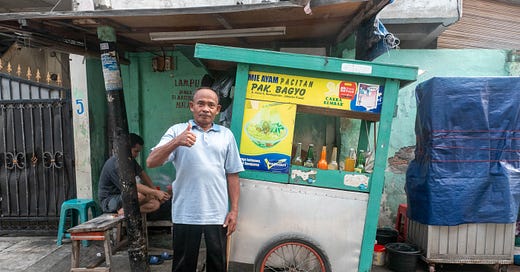Jakarta isn’t a city foreigners visit, beyond stopping briefly on their way to Bali, the shiny thing that vacuums up vacationers, leaving the rest of Indonesia tourist free.
Even without Bali, Jakarta is a hard sell as a tourist destination.
On paper it’s a megalopolis with no personality beyond being one of the world’s biggest megalopolises. An extensive ink blot on maps, taking up roughly fifty square miles and a large chunk of western Java, with an official population of around thirty three million, although that’s probably under counting.
From the air it looks impersonal as hell — mile after mile of densely packed two story indistinguishable concrete buildings with tin roofs of hanging laundry, plastic water tanks, and cable dishes, the whole scene bisected every now and then by wide boulevards of glass towers and modern apartment buildings.
The bus into the city from the airport doesn’t make it any more welcoming. You inch along on wide streets jammed in both directions with cars, mopeds, and three wheeled bajajs, past newer glass towers, older cement office buildings, moped mechanics, food carts, and wood and tin kiosks selling side view mirrors, coke bottles of gas, and nasi goreng. Sometimes all from the same stand.

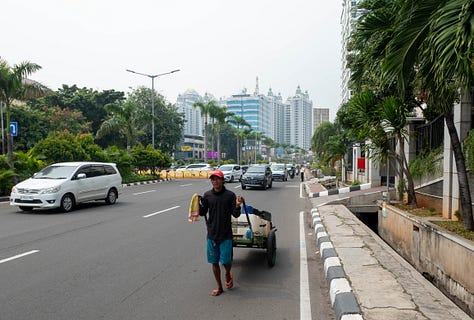
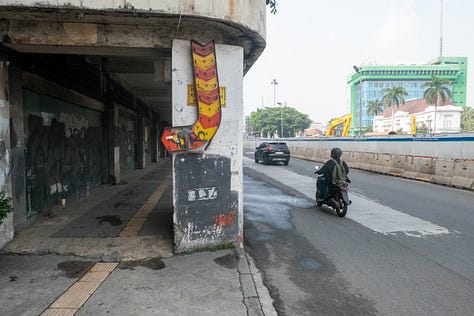
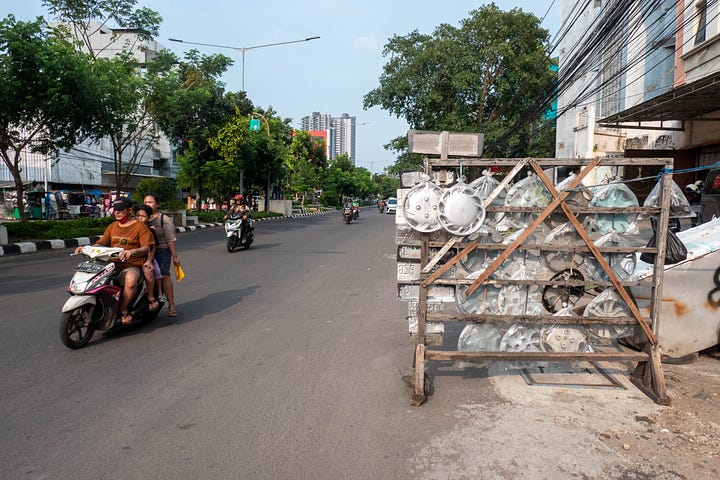
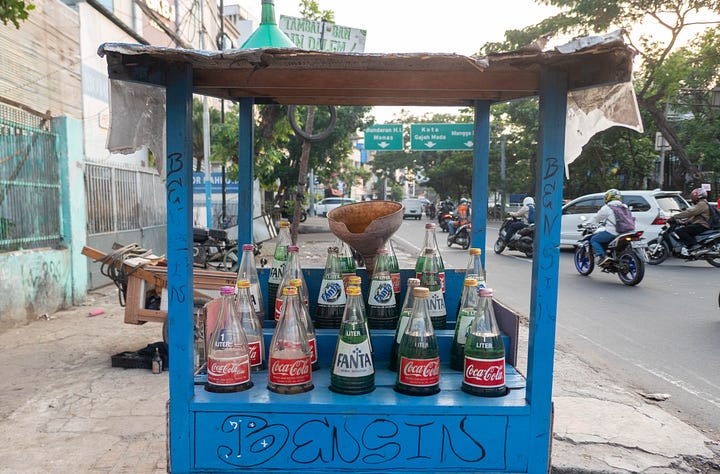
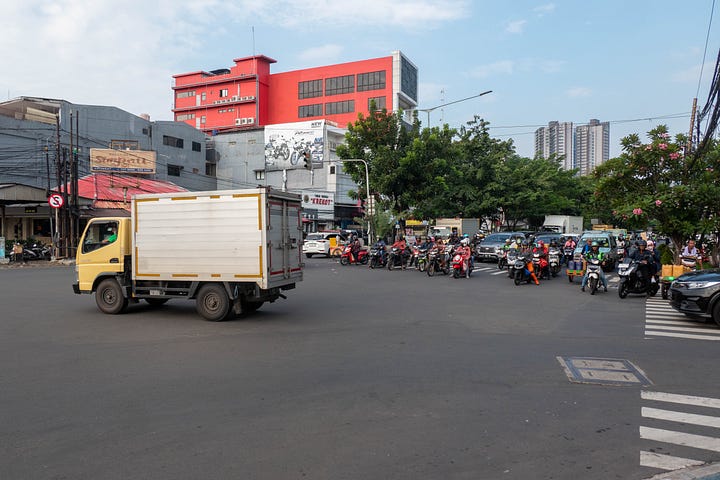
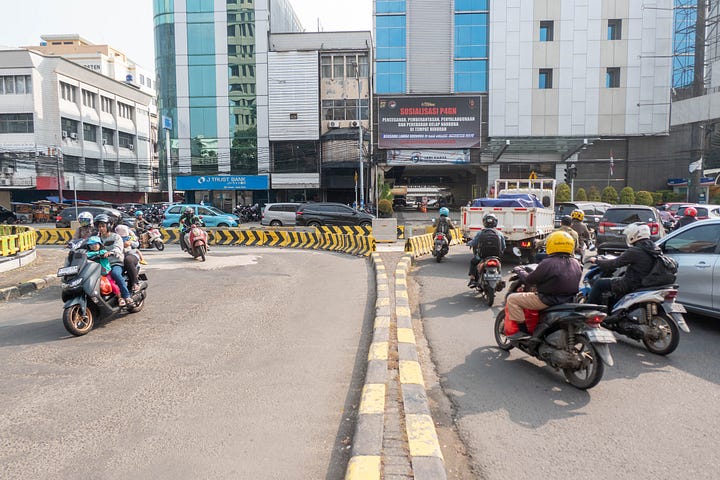
First impressions don’t help. It’s not an easy town to walk in, because unlike in Hanoi, where you can safely split the swarm of agile mopeds by walking directly into the road, Jakarta has too many cars for that1, making it a harder and far deadlier real world game of Frogger.
It’s not a pretty town, with no sense of style or flair. It doesn’t even have the gaudy night time lights of other Asian cities like Seoul, or Taipei, or even the murals found in lesser up and coming cities. It is rather, a cornucopia of greys, beiges, and rusts. All other colors, when attempted, quickly get dulled down by years of smog and dirt.
It’s a foul smelling town. All waste, especially in the poorer neighborhoods, is dumped into rectangular cement trenches that line all the roads, which then run into larger and larger trenches, before all of it’s dumped into broad “rivers” feeding into the ocean. These rivers are wide, slow moving, reek of sewage, and bubble constantly from decay and other ungodly chemical reactions taking place in the thick mud of their beds and banks.
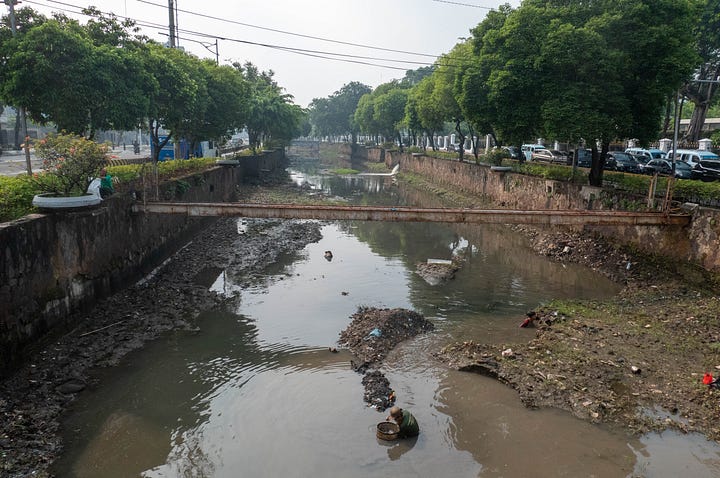
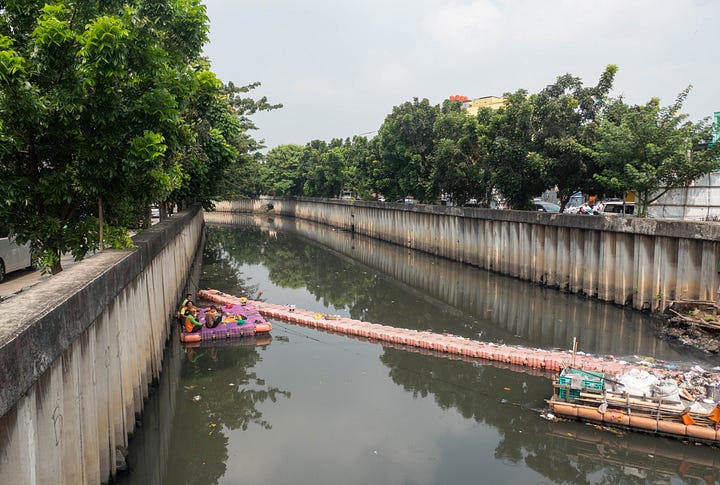
Yet I really like Jakarta, because more than any other city I’ve walked, it’s really a conglomerate of small neighborhoods. It’s a megalopolis, but a warm one because it’s cobbled together from something like 16,000 villages, each distinct, each with its own personality, and each with the friendliness of a rural town.

